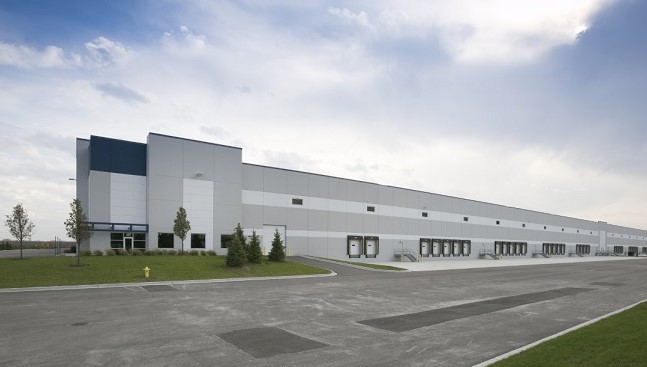 Bridge Development Partners recently filled up its new cold storage facility located at 555 Northwest Ave. in Northlake, IL.
Bridge Development Partners recently filled up its new cold storage facility located at 555 Northwest Ave. in Northlake, IL.
CHICAGO—This region's industrial sector is in the midst of an unparalleled boom. Developers have launched record-breaking numbers of new warehouse and distribution centers, and tenants have lined up to fill most the new space.
But according to a new study by NKF, one subtype that needs more growth and investment is cold storage. Driven by the expansion of e-commerce and the growing popularity of specialized food delivery, an extraordinary demand exists nationwide for new freezer and cooler space, but developers remain leery.
“Developers won't build cold storage buildings on spec because of the high costs,” Corey B. Chase, NKF's senior managing director, tells GlobeSt.com. “It's not just in Chicago, it's everywhere.”
On average, this construction costs between $150 and $250 per square foot, compared with $40 or $50 for standard industrial buildings. As a result, “companies that are looking for modern freezer and cooler spaces are having a hard time.” In fact, if they need about 100,000 square feet, the market currently has only one or two options.
The vacancy rate for cold storage now stands at 9.5%, he adds, and inventory in the Chicago region totals only 7.3 million square feet, or about less than 1% of the total inventory. Furthermore, a lot of existing space has 12' clear ceiling heights and other features which renders it functionally obsolete. Most new warehouse and distribution facilities have at least 32' ceilings and many food companies now expect the same capacity in cold storage spaces.
Bridge Development Partners has become one of the leading providers of this extremely specialized and expensive product. As reported in GlobeSt.com, in late 2016 Chase and associate Kyle A. McKechnie represented Fannie May in a long-term lease for 77,885 square feet of cold storage space within Bridge Point Northlake, a former distribution center for Dominick's that Bridge transformed into a business park with speculative cold storage space.
The company took a risk and made it pay off, Chase says. And even if few others make similar jumps in the near future, the demand will be there. More companies are expected to start delivering food directly to consumers, especially millennials, a generation accustomed to clicking on a website and with another click ordering food for home delivery.
“It's more than just food,” he adds. Pharmaceutical firms, for example, now see home delivery for their products, many of which are temperature sensitive, as a real option. “Instead of going to Walgreens, customers will order the drug on an Amazon-type site.”
And developers that build new, truly modern spaces can expect solid rents. “On average, tenants can expect to pay $9.75 per square foot, although asking rents for new, top-tier product have been as high as $12 to $14.
© Touchpoint Markets, All Rights Reserved. Request academic re-use from www.copyright.com. All other uses, submit a request to [email protected]. For more inforrmation visit Asset & Logo Licensing.







